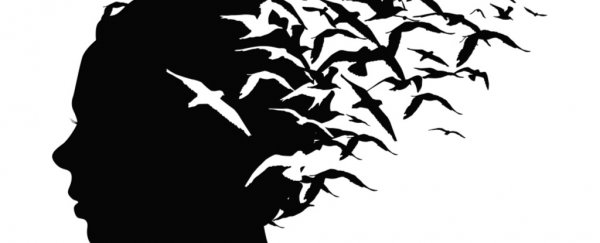Surveying literature on brain lesions has led a team of researchers to pinpoint specific brain networks that make up our sense of free will.
According to the study, the idea that we have control over our destinies appears to involve a neurological network linking distant parts of the cortex - the outer layer of our brain.
Pinpointing the regions involved with unfettered agency might help explain why humans have evolved such a unique sense of self. (Sadly, it still can't tell us whether free will truly exists, or if we're just part of an advanced civilisation's video game).
So how do you work out where free will exists in the brain? An international team of neuroscientists collected data on just under 80 patients diagnosed with one of two disorders that are partially defined by a loss of either desire or responsibility of their actions.
One condition goes by the rather creepy name of alien hand syndrome, characterised by movements of a limb that aren't attributed to its owner's volition.
Case studies on those with the condition describe hands reaching up to lightly stroke their owner's face, or worse still, involuntarily choking and striking their own body.
As terrifying as it would be for those experiencing the condition, its neurology has fascinated researchers for years, implying a breakdown between the brain's direction of fine movements and our perception of control.
Similarly, akinetic mutism has also drawn the attention of neurologists as a possible way to study our brain's ability to motivate physical activity. Commonly mistaken for a coma, patients with the condition appear to be relatively unresponsive to the world.
An important distinction is that they do show signs of being awake, following movements with their eyes, swallowing food, and making simple sounds.
Both of these medical phenomena hint at some sort of disconnect between a brain that takes care of business and a mind that issues directives, making them an obvious place to hunt for links between agency and activity.
To figure this out, the team applied a process that has its roots in the very origins brain research, with a more modern twist - looking at the location of deteriorated neural tissue.
With advances in neurology, focus has shifted from the brain operating like a computer – with distinct components performing set tasks – to a less modular approach, where networks of centres work together to provide functionality.
"Lesion network mapping is a recently validated technique that allows scientists to map symptoms caused by brain injury to specific brain networks," says Michael Fox, Director of the Laboratory for Brain Network Imaging and Modulation at Beth Israel Deaconess Medical Center.
"In this study, we used this network localization approach to determine the neuroanatomical basis for disordered free will perception," says Fox.
Based on an analysis of 28 cases of akinetic mutism, the team tied volition to a part of the anterior cingulate cortex: an area under the front part of the brain that's well established as responsible for attention and decision making.
Among the 50 examples of alien hand syndrome the researchers looked at, 90 percent had lesions that interfered with a network related to the precuneus cortex, which sits just in front of the occipital lobe at the back of the brain.
Neither discovery is in itself a surprise, as the functionality of both regions is well known. But using a networking technique to associate volition and agency with a broad network involving these two areas introduces old ideas to a more accurate framework.
The team went on to compare their finds with the brains of patients with hemiparesis, who only experience symptoms of akinetic mutism on one side of their body.
Likewise, they looked at comparable signs of alien hand syndrome in individuals with a conditions known as hemichorea, who have involuntary movements yet still feel responsible for them.
It's important to note the findings can only really be applied to acts of movement, rather than abstract thinking.
"It remains unknown whether the network of brain regions we identify as related to free will for movements is the same as those important for moral decision-making," says Fox.
None of this helps us understand what free will really is, either. Philosophers have debated for centuries whether how the hard laws of physics might give rise to the undecided fate of human action, and we're really no closer to an answer.
It's clear we appear to have some sense of direction over our actions, though, which involves a complex network of neurological operations. This adds weight to an interesting question – why would such a function evolve in the first place?
Whatever agency and volition are – whether they're illusions or complex physical phenomena we're barely capable of comprehending – we're now one small step closer to understanding how they operate through a network of brain tissue that stretches across the brain, which could tell us where our sense of freedom comes from.
This research was published in PNAS.
